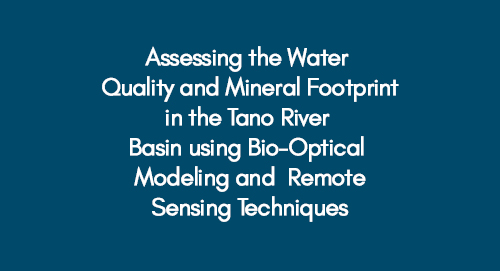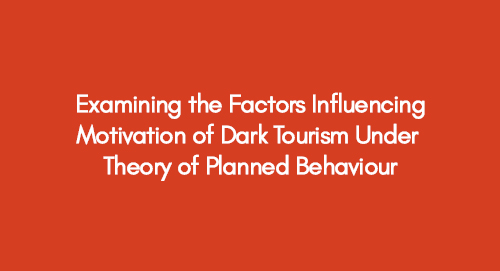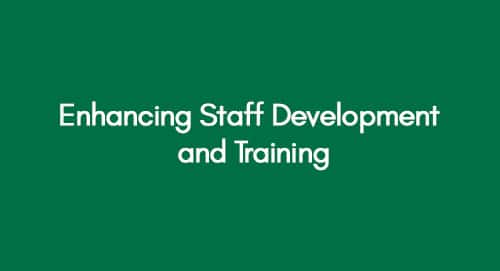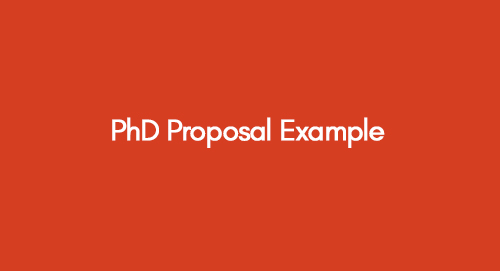
Water Quality and Mineral Footprint Assessment in the Tano River Basin: Application of Bio-Optical Modeling and Remote Sensing Techniques
January 18, 2022
Leading Change Management in Business
January 19, 2022Examining dark tourism motivation through the Theory of Planned Behaviour reveals how attitudes, social norms, and perceived control intricately shape visitor engagement with morbidity and tragedy. Dark tourism, characterized by exploring sites entwined with death and tragedy, has emerged as a captivating research subject. The allure of these morbid attractions has prompted scholars to delve into the motivations propelling visitors to engage with such haunting destinations. This blog uses the Theory of Planned Behaviour as a guiding framework to explore the complex factors that shape motivation in dark tourism.
Ethics and Corporate Social Responsibility in Tourism
The Theory of Planned Behavior offers a valuable lens through which we can dissect the psychological drivers steering visitor intentions in dark tourism. As we explore the intricate interplay of attitudes, subjective norms, and perceived behavioural control, a deeper understanding of why individuals are drawn to these sites begins to emerge. From attitudes towards the sombre histories embedded in these locations to the impact of societal norms and the perceived ease of visiting, these factors collectively contribute to the nuanced motivations that propel individuals towards dark tourism experiences.
Background
Dark tourism, also known as thanatourism, has experienced significant growth in the modern age. According to Iii and Dugdale (2018), thanatourism involves travelling to locations motivated by a desire for actual or symbolic encounters with death, particularly violent death. The promotion of dark sites on media platforms such as television, news outlets, and social media has raised awareness among tourists, leading to an increased interest in visiting locations known for their morbid or violent histories (Collins-Kreiner, 2016; Farmaki, 2013). Thanatourism is characterized by the inspiration to travel exclusively for the fascination with death, irrespective of the individuals involved (Stone et al., 2018).
Managing Resources in Hospitality and Tourism
The exploration of places associated with death has been a practice for centuries. Early instances of thanatourism include attending Roman gladiator games in the Republic, tours to witness public hangings in England and travel to observe medieval executions (Ashworth & Isaac, 2015). In modern times, tourists are drawn to sites of death and tragedy, with popular destinations including the New York World Trade Center disaster site, Mother Teresa's death sites, the Dracula Experience in the UK, and general graveyards (Stone et al., 2018). Scholars argue that the increased accessibility of such sites has fueled the growing interest in death, allowing people to pay their respects or contemplate the aftermath of tragic events (Farmaki, 2013; Magee & Gilmore, 2015; Podoshen et al., 2015; Yan et al., 2016).
Existing research seeks to understand why tourists are attracted to these destinations and how those offering such products manage the perception of death and disaster (Farmaki, 2013; Hooper & Lennon, 2016; Korstanje & George, 2015; Light, 2017). The connection between the presentation and consumption of death was initially explored by Lennon and Foley (2000), who identified three contributing factors to the thriving tourism industry: global communications, sites perpetuating anxiety and doubt, and the commodification of these sites. Unanswered questions in this field revolve around whether there is measurable growth in interest in death and atrocity and whether there is an increasing supply of dark tourist sites. The proposed study addresses these questions by focusing on how motivations and intentions impact an individual's desire to visit dark tourist sites, specifically examining the Tower of London.
Research Problem
While there has been considerable theoretical research on thanatourism, the empirical data in this area remains limited. Most existing studies delve into potential motivations behind tourists visiting such tourist sites, but there is a notable absence of empirical evidence to validate these theories. A preliminary literature review uncovered only one documented empirical study focusing on the motivations of tourists visiting a destination associated with a disaster (Podoshen et al., 2015).
This study revealed that many tourists visited the dark location primarily to satisfy their curiosity about the natural disaster that had occurred there (Schwarz & Benson, 2018; Sharma & Nayak, 2019; Tinson et al., 2015; Yan et al., 2016). The scarcity of empirical literature highlights the need for further research to understand better the motivations driving consumers of dark tourist locations. The proposed research aims to investigate these motivations based on the existing theoretical knowledge of consumer behaviour in the context of dark tourism.
Research Aims and Objectives
The primary objective of the proposed study is to leverage established theoretical frameworks of consumer behaviour to discern the motivations and intentions of tourists interested in the thanatourism location – the Tower of London. The study aims to address the following research questions:
- What is the correlation between the motivations and intentions of individuals who have either visited the Tower of London or are planning such a visit?
- Are there notable differences in the relationship with theoretical constructs based on an individual's intention to visit such a location or having already visited a dark site?
To effectively answer these research questions and fulfil the overarching aim of the study, the following specific objectives have been formulated:
- Using the Push-Pull Factor Theory, investigate the motivational factors influencing tourists' intentions to visit dark sites.
- Analyze the behavioural intentions of individuals desiring to visit a thanatourism location, employing the Theory of Planned Behavior (TPB).
- Explore consumer motivations and intentions related to dark tourism constructs as identified in the existing literature.
- Offer practical implications that can assist the tourism industry in deriving effective benefits from dark tourism.
By pursuing these objectives, the study aims to contribute valuable insights into the motivations and intentions of tourists engaging with dark tourism, specifically focusing on the iconic Tower of London.
Research Justification
The insights derived from the proposed study hold significant importance for academics and practitioners, given its empirical exploration of the prominent tourism sector. The information gathered and translated into knowledge for the tourism and hospitality industry can be a valuable tool for marketing dark tourist attractions to potential consumers. By utilizing four distinct dark tourism constructs theorized in the literature and testing their relationship with variables from the Theory of Planned Behavior, the study aims to enhance our understanding of consumer behaviour concerning motivations for visiting tourist destinations. This enhanced understanding can empower local tourist industries in the United Kingdom to attract more visitors than they currently receive.
Furthermore, the proposed study presents an opportunity to contribute to existing research by establishing a link between the Theory of Planned Behavior and thanatourism. While current literature has predominantly focused on and utilized the push-pull theory of motivational factors in dark tourism research (Heidelberg, 2015), the proposed study integrates the Theory of Planned Behavior with the push-pull theory to demonstrate its applicability. This innovative approach can be replicated by other researchers studying specific dark tourist attractions based on their perceived level of ominousness. Such replication would enable researchers to discern whether the motivation for visiting a particular site changes depending on the location or the perceived "darkness" of the destination.
Literature Review
The proposed study will employ a thematic approach to review and evaluate the literature. This approach incorporates academic materials, including journal articles, textbooks, and conference papers published within the last five years. This timeframe ensures the utilization of the latest research, incorporating contemporarily relevant information. The thematic literature review categorises and organises the literature based on specific themes.
Conducting a thorough literature review involves the integration of pertinent theories, such as the push-pull theory and the theory of planned behaviour (Busby & Devereux, 2015). This comprehensive approach will critically analyze the dark tourism constructs currently acknowledged as primary motivations for engaging in dark tourism. By synthesizing and organizing relevant literature thematically, the review provides a comprehensive and up-to-date understanding of the motivations and intentions driving individuals to participate in thanatourism, laying the groundwork for the proposed empirical study.
Dark Tourism
Dark tourism presents a captivating and contentious research domain that allows scholars to delve into intricate issues spanning social, political, cultural, and moral dimensions. Academics have identified five travel activities falling under the category of thanatourism, as articulated by (Korstanje & George, 2015; Seraphin, 2017; Skinner, 2016):
- Traveling to witness public enactments of death
- Visiting locations associated with mass or individual deaths
- Travelling to visit memorials
- Viewing material evidence or symbolic representations of death in unrelated locations
- Engaging in re-enactments or simulations of death
A consistent theme in the literature on dark tourism aims to elucidate the factors contributing to the growing interest in visiting destinations linked to death and disaster (Kerr & Price, 2018). Existing literature suggests a heightened curiosity about locations tied to death, attributing it to the medicalization of death. This transformation is underscored by significant shifts in the processes and societal acceptance of death amid modernization (Martini & Buda, 2020).
Illich (1990) proposed a theory that traces the evolving perceptions of health, healing, and death over the past five centuries, delineating specific stages. In his work, a sixth stage emerged in the 20th century, termed "Death and Intensive Care," where Illich argued that modern perceptions of death involve patients being placed in intensive care units, relinquishing control over their deaths to medical professionals. The escalating role of medicine as the arbiter of our deaths has instigated cultural anxieties, shifting focus from the fear of post-mortem judgment to apprehensions about the act of death itself.
Methodology
This study employs a rare blend of qualitative interviews and quantitative surveys, employing a methodological synthesis to unravel the nuanced motivations underlying dark tourism. The aim is to capture the intricate interplay between theoretical constructs and real-world experiences, ensuring a comprehensive understanding of this complex phenomenon.
Research Philosophy
In research, two prevailing ontological and epistemological traditions, positivism and interpretivism, guide methodologies. Positivist researchers contend that reality is external, singular, and objective, excluding personal perspectives or beliefs in research situations (Sharma & Nayak, 2019). This perspective advocates for a controlled, structured approach where a clear research topic is identified, leading to the development of hypotheses.
Conversely, interpretivism posits that reality is multiple and relative, suggesting that diverse realities are shaped by surrounding systems that attribute meaning to them (Busby & Devereux, 2015; Gmelch & Kaul, 2018). Knowledge acquired through interpretivism is socially constructed, challenging objective determination and perception. The proposed research aligns with a positivist approach, employing quantitative research methods to develop the study, including constructing data collection instruments, strategies, and analysis.
Research Design
Given the needs of the current study, surveys emerge as the most apt strategy for research. Surveys enable data collection on perspectives, situations, and practices at a specific moment through questionnaires and interviews (Lennon, 2018). Employing quantitative analytical methods further permits researchers to draw inferences based on existing relationships in the data. As Lam et al. (2001) highlighted, surveys allow researchers to examine multiple variables concurrently, a feat often challenging in laboratory or field experiments.
Sampling
The envisaged sampling strategy involves randomly selecting participants who have either visited or are planning to visit the Tower of London as a dark tourist destination. In light of the ongoing COVID-19 situation in the United Kingdom, participants will be invited to partake in an online survey administered through Survey Monkey. Considering the methodological demands of structural equation modelling (SEM), a substantial sample size of 200 participants (N = 200) is targeted. This choice aligns with the recommendations of Hair et al. (2017), who advise a minimum sample size of 200 for SEM studies, with a preference for exceeding 400 observations.
Impact of COVID-19 Pandemic on the Hospitality and Tourism Industry
Data Collection
The planned study will employ a survey instrument to gauge the dark tourism constructs and variables of the Theory of Planned Behavior. Measurement items will be adapted from validated tools utilized in studies by Ajzen (1991), Biran et al. (2014), Bissell (2009), and Molle and Bader (2014). The selected constructs in this study align with established relationships in the literature, commonly associated with motivations for dark tourism locations.
The instrument for data collection will explore constructs such as causal interest, engaging entertainment, unique learning experience, and dark experience. These constructs will be assessed by the Theory of Planned Behavior constructs, encompassing behavioural intentions, subjective norms, attitudes, and perceived behavioural controls. Additionally, demographic questions, including gender, age, education, income, country of residence, and marital status, will be incorporated into the survey instrument. The proposed questionnaire will utilize a Likert scale to facilitate participant responses, allowing individuals to indicate their level of agreement on a five-point scale.
Data Analysis
The data analysis for the proposed study will unfold in two stages. In the initial phase, descriptive statistics for all variables will be computed using the IBM Statistical Programme for Social Sciences (SPSS) v. 24. Subsequently, the second stage will employ Structural Equation Modeling (SEM) with Smart PLS 3.0. This software tool will facilitate model evaluation through reliability and validity tests for each variable, ensuring the model's appropriateness for hypothesis testing.
SEM is chosen for this study as it enables concurrent evaluation of reliability and validity for each of the seven latent variables. Additionally, SEM can estimate relationships among the seven latent variables and the dependent variable. As posited by Hair et al. (2011), SEM approaches offer the capability to integrate theoretical and empirical knowledge in a manner not feasible with Multivariate Regression Analysis (MRA), Factor Analysis (FA), and Path Analysis (PA).
Constructing the Partial Least Squares (PLS) path model involves three components: the structural model, measurement model, and weighting schemes. While structural and measurement models are common across various SEMs, weighting schemes are specific to the PLS approach, as noted by Tenenhaus et al. (2005). Monecke and Leisch (2012) argue that PLS path models permit only recursive relationships and can be expressed as a connected digraph.
Proposed Project Timeline
The proposed project timeline outlines a systematic approach, commencing with survey instrument development and participant recruitment in the first quarter. The second quarter will witness data collection, followed by data analysis in the third quarter, utilizing SPSS and Smart PLS 3.0. The final quarter will be dedicated to result interpretation, report writing, and dissemination of findings. This sequential plan ensures a methodical execution of the research project.

Conclusion
In conclusion, the proposed study on dark tourism motivations and the theory of planned behaviour presents an innovative exploration into the complex realm of thanatourism. Combining established theoretical frameworks with empirical research using surveys and Structural Equation Modeling, the study aims to shed light on the intricate relationships among various constructs associated with dark tourism. The chosen methodology, sampling strategy, and data analysis techniques are carefully aligned to address the research questions and contribute valuable insights to academia and the tourism industry. As dark tourism continues to captivate interest, this study endeavours to deepen our understanding of the motivations behind visiting such destinations, ultimately fostering informed practices for researchers and practitioners.
References
Ashworth, G. J., & Isaac, R. K. (2015). Have we illuminated the dark? Shifting perspectives on ‘dark tourism. Tourism Recreation Research, 40(3), 316–325.
Busby, G., & Devereux, H. (2015). Dark tourism in context: The Diary of Anne Frank. European Journal of Tourism, Hospitality and Recreation, 6(1), 27–38.
Collins-Kreiner, N. (2016). Dark tourism as/is a pilgrimage. Current Issues in Tourism, 19(12), 1185–1189.
Farmaki, A. (2013). Dark tourism revisited: A supply/demand conceptualization. International Journal of Culture Tourism and Hospitality Research, 7, 281–292. https://doi.org/10.1108/IJCTHR-05-2012-0030
Gmelch, S. B., & Kaul, A. (2018). Tourists and tourism: A reader. Waveland Press.
Heidelberg, B. A. W. (2015). Managing ghosts: Exploring local government involvement in dark tourism. Journal of Heritage Tourism, 10(1), 74–90. https://doi.org/10.1080/1743873X.2014.953538
Hooper, G., & Lennon, J. J. (2016). Dark tourism: Practice and interpretation. Routledge.
Iii, P. T. H., & Dugdale, L. S. (2018). How Do Medicalization and Rescue Fantasy Prevent Healthy Dying? AMA Journal of Ethics, 20(8), 766–773. https://doi.org/10.1001/amajethics.2018.766.
Kerr, M. M., & Price, R. H. (2018). “I know the plane crashed”: Children’s perspectives in dark tourism. The Palgrave Handbook of Dark Tourism Studies (pp. 553–583). Springer.
Korstanje, M. E., & George, B. (2015). Dark Tourism: Revisiting Some Philosophical Issues. E-Review of Tourism Research, 12.
Lennon, J. J. (2018). Dark tourism visualisation: Some reflections on the role of photography. In The Palgrave Handbook of Dark Tourism Studies (pp. 585–602). Springer.
Light, D. (2017). Progress in dark tourism and thanatourism research: An uneasy relationship with heritage tourism. Tourism Management, 61, 275–301.
Magee, R., & Gilmore, A. (2015). Heritage site management: From dark tourism to transformative service experience? The Service Industries Journal, 35(15–16), 898–917.
Martini, A., & Buda, D. M. (2020). Dark tourism and affect: Framing places of death and disaster. Current Issues in Tourism, 23(6), 679–692.
Podoshen, J. S., Venkatesh, V., Wallin, J., Andrzejewski, S. A., & Jin, Z. (2015). Dystopian dark tourism: An exploratory examination. Tourism Management, 51, 316–328.
Schwarz, B., & Benson, J. J. (2018). The “Medicalized Death”: Dying in the Hospital. Journal of Housing For the Elderly, 32(3–4), 379–430. https://doi.org/10.1080/02763893.2018.1505462
Seraphin, H. (2017). Terrorism and tourism in France: The limitations of dark tourism. Worldwide Hospitality and Tourism Themes, 9(2), 187–195. https://doi.org/10.1108/WHATT-09-2016-0044
Sharma, P., & Nayak, J. K. (2019). Dark tourism: Tourist value and loyalty intentions. Tourism Review.
Skinner, J. (2016). Walking the Falls: Dark tourism and the significance of movement on the political tour of West Belfast. Tourist Studies, 16(1), 23–39.
Stone, P. R., Hartmann, R., Seaton, A. V., Sharpley, R., & White, L. (2018). The Palgrave handbook of dark tourism studies. Springer.
Tinson, J. S., Saren, M. A. J., & Roth, B. E. (2015). Exploring the role of dark tourism in the creation of the national identity of young Americans. Journal of Marketing Management, 31(7–8), 856–880. https://doi.org/10.1080/0267257X.2014.995207
Yan, B.-J., Zhang, J., Zhang, H.-L., Lu, S.-J., & Guo, Y.-R. (2016). Investigating the motivation–experience relationship in a dark tourism space: A case study of the Beichuan earthquake relics, China. Tourism Management, 53, 108–121.
Get 3+ Free Dissertation Topics within 24 hours?


















 Download PDF File
Download PDF File








